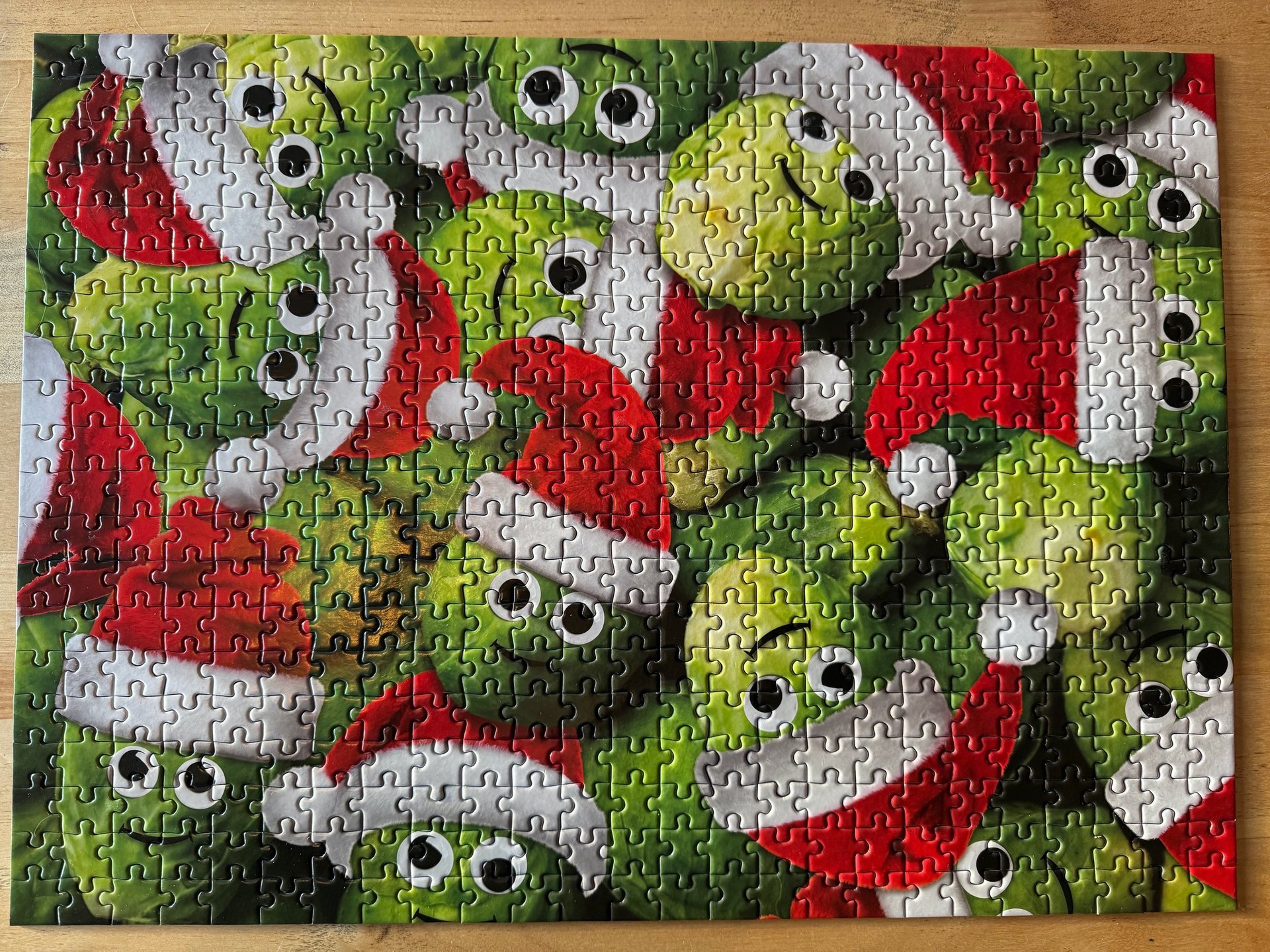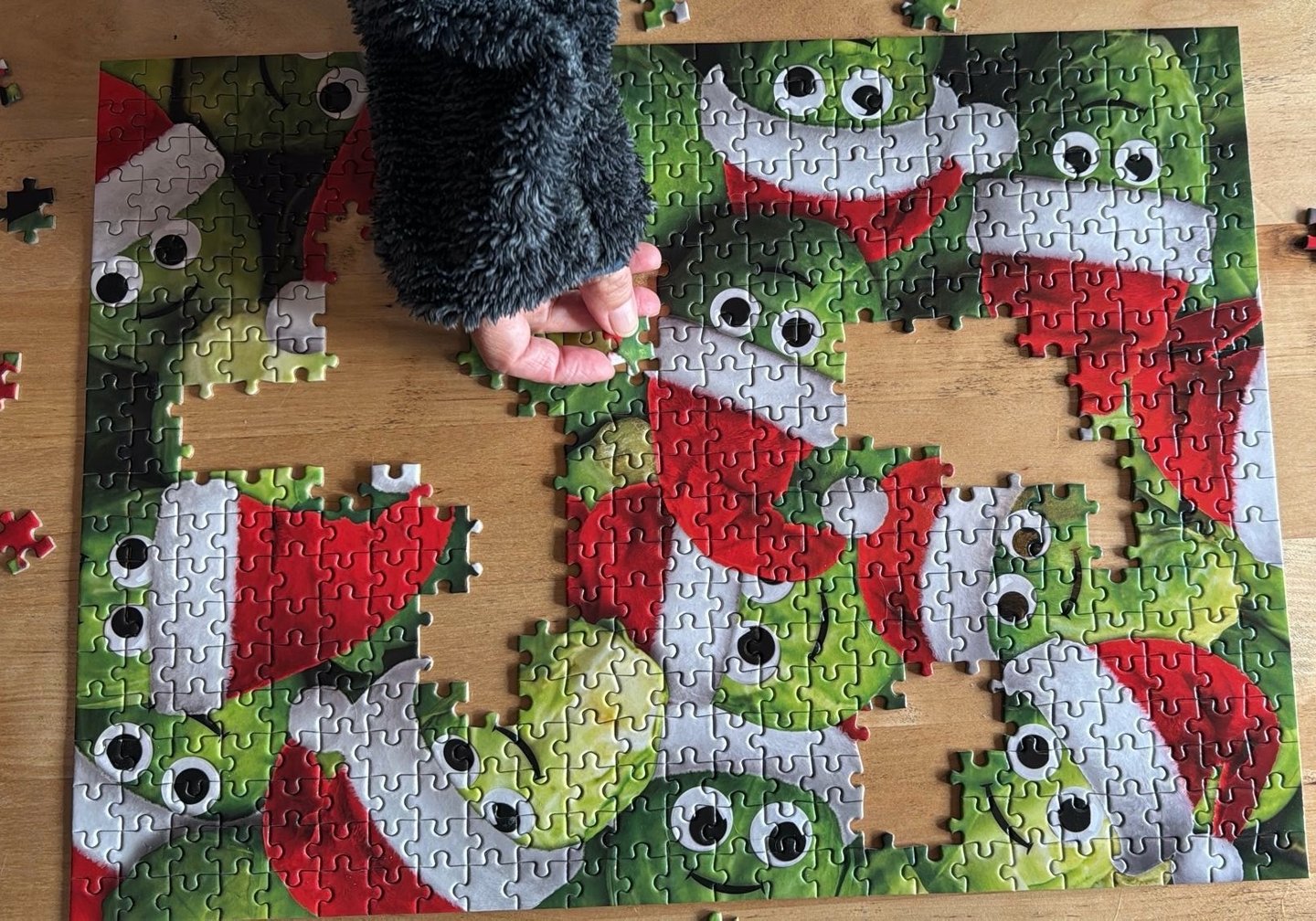
Sprouting Success
How my Christmas jigsaw puzzle mirrored goal setting
Helen Crossley
1/7/20253 min read
Have you ever tackled a jigsaw puzzle that seemed almost impossible at first glance? Recently, I attempted a puzzle featuring Brussels sprouts wearing Santa hats. It looked fun and festive... dare I say, easy?
I was wrong.
It turned out to be a challenge of endless green pieces blending into each other.
As I wrestled with my “Christmas conundrum,” I realised how much the process of solving a puzzle mirrors the journey of working toward a goal. Here’s what I learned:
1. Outline Your Goal (Start with the Picture on the Box)
Every jigsaw puzzle begins with the picture on the box; a clear vision of what success looks like.
Goals are no different. Defining your desired outcome gives you a roadmap and helps you stay focused, even when things feel overwhelming. Taking the time to describe your goal in detail helps make it more compelling, keeping you motivated when the going gets tough.
2. Build the Framework (Find the Corners and Edges)
With puzzles, the first step is always finding the corners and edges; creating a structure to work within.
In goal-setting, this means breaking your vision into manageable steps and identifying the resources, tools, or boundaries that will support you.
Think about what you need to get started: a flat surface, good lighting, time, and maybe even your glasses!
Similarly, in life, having the right environment, tools, and motivation at the start creates a solid foundation for success.
3. Tackle the Tricky Beginning (Sorting Pieces Without a Clear Fit)
The early stages of a puzzle can feel frustrating, especially when you’re faced with an overwhelming number of similar-looking pieces.
My Brussels sprout puzzle was all shades of green, and it felt impossible to see how things would come together.
The same is true for goals. The beginning can often involve trial and error and can feel like slow progress. Some people find this stage disheartening, while others thrive on the excitement of starting something new.
For me, I love the early stages; hunting for edge pieces and building the border feels like a satisfying challenge. But maybe you’re someone who finds their groove in the middle stages, where focus and attention to detail come into play. We all work differently, and recognising where you thrive can help you stay motivated.
4. Small Wins Create Momentum (Fitting Pieces Together)
Once a few puzzle pieces fall into place, momentum builds. Suddenly, it feels like progress is happening.
Similarly, achieving small milestones while working toward a goal, whether it’s learning a new skill or completing a key task… it all builds confidence and motivation to keep going.
Confidence, or lack of it, can sometimes stop us in our tracks, preventing us from even starting. But here’s the thing: confidence grows by doing. The more you try, the more you’ll believe in your ability to succeed. (Perhaps this deserves a blog of its own!?)
5. The Picture Comes to Life (The Final Push)
As more pieces slot into place, the puzzle starts to come alive. It gets easier and, dare I say, more enjoyable.
In the same way, when you see your goal take shape, your energy and excitement grows. The final steps, once daunting, now feel rewarding.
In my Brussels sprout puzzle, I even enlisted my husband’s help. We divided the puzzle in half and made it a friendly competition. (For the record, he won...) Sharing the experience made it more fun and kept me motivated. Similarly, having someone in your corner, whether to support, encourage, or actively help can make all the difference when working toward your goals.
Conclusion
Whether it’s a dozen Brussels sprouts in Santa hats or a bold life goal, the journey is rarely straightforward.
The key is to trust the process: start with the vision, build the structure, embrace the challenge, and celebrate the progress.
Remember, every small piece, no matter how insignificant it seems, contributes to the bigger picture.
So, what’s your “Brussels sprout puzzle,” and how will you tackle it?








